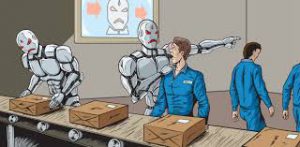With the Holiday celebrations behind us, Mad Scientist Laboratory believes a retrospective of FY17 is in order to recap the key points learned about the Future Operational Environment (OE).
Our first event in 2017 was the Robotics, Artificial Intelligence, and Autonomy Conference, facilitated with Georgia Tech Research Institute (GTRI) in Atlanta, Georgia, 7-8 March 2017. Key findings that emerged from this event include:
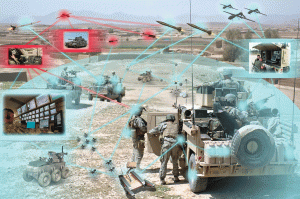 All things in the future OE will be smart, connected, and self-organizing. The commercial Internet of Things (IoT) will turn into a militarized Internet of Battle Things (IoBT).
All things in the future OE will be smart, connected, and self-organizing. The commercial Internet of Things (IoT) will turn into a militarized Internet of Battle Things (IoBT).
 Narrow Artificial Intelligence (AI) is here today and is beginning to show up on the battlefield. Near peer competitors and non-state actors will have access to these technologies on pace with the United States due to commercial and open source availability of algorithms.
Narrow Artificial Intelligence (AI) is here today and is beginning to show up on the battlefield. Near peer competitors and non-state actors will have access to these technologies on pace with the United States due to commercial and open source availability of algorithms.
 AI and humans must co-evolve. It is not clear that the singularity (i.e., AI leading to a “runaway reaction” of self-improvement cycles, ultimately resulting in a super intelligence far surpassing human intelligence) will be realized in the period leading up to 2050. Human teaming with AI enablers will be the best instantiation of general intelligence supporting Commanders on the future battlefield. Next steps towards singularity are systems that can reflect, have curiosity, and demonstrate teamwork.
AI and humans must co-evolve. It is not clear that the singularity (i.e., AI leading to a “runaway reaction” of self-improvement cycles, ultimately resulting in a super intelligence far surpassing human intelligence) will be realized in the period leading up to 2050. Human teaming with AI enablers will be the best instantiation of general intelligence supporting Commanders on the future battlefield. Next steps towards singularity are systems that can reflect, have curiosity, and demonstrate teamwork.
 The physical and virtual spaces will merge. Augmented and virtual reality will become more than a gaming platform focused on entertainment but a global communication platform delivering unique expertise to the battlefield to include medical and language skills.
The physical and virtual spaces will merge. Augmented and virtual reality will become more than a gaming platform focused on entertainment but a global communication platform delivering unique expertise to the battlefield to include medical and language skills.
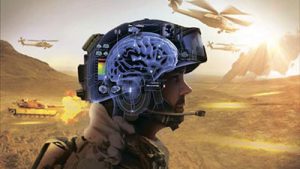 Convergence is a key attribute in all aspects of the future battlefield. Expect convergence of capability, sensors, power onto systems, uniforms, and in the far term humanity itself.
Convergence is a key attribute in all aspects of the future battlefield. Expect convergence of capability, sensors, power onto systems, uniforms, and in the far term humanity itself.
Our Enemy after Next Conference, facilitated with NASA Langley Research Center in Hampton, Virginia, on 11-12 April 2017 led to the following conclusions:
 The next fight will be characterized by electrons vs electrons. All belligerents will seek to hide themselves and blind their enemies. The fight after next will be characterized by AI vs AI (algorithm vs algorithm). How AI is structured and integrated will be the strategic advantage.
The next fight will be characterized by electrons vs electrons. All belligerents will seek to hide themselves and blind their enemies. The fight after next will be characterized by AI vs AI (algorithm vs algorithm). How AI is structured and integrated will be the strategic advantage.
 Information Warfare is taking on new meaning. Humans now have a personal relationship with their information and virtual reality and holograms in your living room will create new opportunities for swaying populations.
Information Warfare is taking on new meaning. Humans now have a personal relationship with their information and virtual reality and holograms in your living room will create new opportunities for swaying populations.
 Major competitions in the war after next include – cyber-attack vs AI, stealth vs detection, directed energy vs hardening, space vs counter-space, strikers vs shielders.
Major competitions in the war after next include – cyber-attack vs AI, stealth vs detection, directed energy vs hardening, space vs counter-space, strikers vs shielders.
 We are in a 10 year window of a change in how we think about space. Space is now competitive as Super-Empowered Individuals, non-state actors, and near peer competitors have near equal access. One major game changer is the commercial move towards a Low Earth Orbit space constellation consisting of thousands of small satellites.
We are in a 10 year window of a change in how we think about space. Space is now competitive as Super-Empowered Individuals, non-state actors, and near peer competitors have near equal access. One major game changer is the commercial move towards a Low Earth Orbit space constellation consisting of thousands of small satellites.
 There is a real tension between the idea that ubiquitous sensors and real time upload of data onto the cloud will make it impossible to hide and that the near equal access of capabilities across all parties will make war constant.
There is a real tension between the idea that ubiquitous sensors and real time upload of data onto the cloud will make it impossible to hide and that the near equal access of capabilities across all parties will make war constant.
At the Visualizing Multi-Domain Battle 2030 – 2050 Conference, facilitated with Georgetown University in Washington, DC, on 25-26 July 2017, Mad Scientists determined:
 The definition of maneuver should be expanded to include maneuvering ideas as well as forces to a position of advantage. A globally connected world and social media platforms have amplified the importance of ideas and the information dimension.
The definition of maneuver should be expanded to include maneuvering ideas as well as forces to a position of advantage. A globally connected world and social media platforms have amplified the importance of ideas and the information dimension.
 Bio convergence with advanced computing is happening at the edge. Humans will become part of the network connected through their embedded and worn devices. From transhumanism to theorizing about uploading the brain, it will not be the IoT but the internet of everything (including humans).
Bio convergence with advanced computing is happening at the edge. Humans will become part of the network connected through their embedded and worn devices. From transhumanism to theorizing about uploading the brain, it will not be the IoT but the internet of everything (including humans).
 Smart cities are leaving the edge and early adopters and becoming mainstream. The data collected by billions of sensors will be a treasure trove for the country and Armed forces that learn to exploit. Passive collection of this information might be a significant advantage in winning the hiders v finders competition.
Smart cities are leaving the edge and early adopters and becoming mainstream. The data collected by billions of sensors will be a treasure trove for the country and Armed forces that learn to exploit. Passive collection of this information might be a significant advantage in winning the hiders v finders competition.
 Cognitive enhancement and attacking the brains (neurological system) of humans is not science fiction. The U.S. Army should establish a PEO for Soldier Enhancement to bring unity of purpose to a range of capabilities from physical/mental enhancement with wearables, embeddables, stimulants, brain gyms, and exoskeletons.
Cognitive enhancement and attacking the brains (neurological system) of humans is not science fiction. The U.S. Army should establish a PEO for Soldier Enhancement to bring unity of purpose to a range of capabilities from physical/mental enhancement with wearables, embeddables, stimulants, brain gyms, and exoskeletons.
 Human enhancement, the unlocking of the genome, and improving artificial intelligence will stress the Army’s policies and ethics. In any case, our 4 + 1 potential adversaries are exploring using all three of these capabilities as a way to gain advantage over U.S. Forces. This is not a 2050 problem but more than likely a 2030 reality.
Human enhancement, the unlocking of the genome, and improving artificial intelligence will stress the Army’s policies and ethics. In any case, our 4 + 1 potential adversaries are exploring using all three of these capabilities as a way to gain advantage over U.S. Forces. This is not a 2050 problem but more than likely a 2030 reality.
The Mad Scientist Initiative employs Crowdsourcing and Story Telling as two innovative tools to help us envision future possibilities and inform the OE through 2050. In our FY17 Science Fiction Writing Contest, we asked our community of action to describe Warfare in 2030-2050. We received an overwhelming response of 150 submissions from Mad Scientists around the globe. From them, we discerned the following key themes:
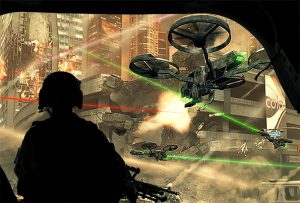 Virtually every new technology is connected and intersecting to other new technologies and advances. Convergence frequently occurred across numerous technologies. Advances in materials, AI, drones, communications, and human enhancement amplified and drove one another across multiple domains.
Virtually every new technology is connected and intersecting to other new technologies and advances. Convergence frequently occurred across numerous technologies. Advances in materials, AI, drones, communications, and human enhancement amplified and drove one another across multiple domains.
 A major cultural divide and gulf in understanding still existed between different populations even with developments in technology (including real-time language translators).
A major cultural divide and gulf in understanding still existed between different populations even with developments in technology (including real-time language translators).
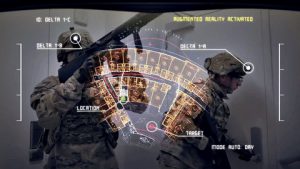 The fully enmeshed communications and sensing residing in future systems made the hiders vs. finders competition ever more important in future conflict settings.
The fully enmeshed communications and sensing residing in future systems made the hiders vs. finders competition ever more important in future conflict settings.
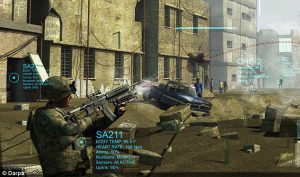 Due to the exponential speed of interaction on the battlefield (during and in between high-intensity conflict), a number of the military units required smaller formations, with large effects capabilities and more authority, and operated under flat and dispersed command and control structures.
Due to the exponential speed of interaction on the battlefield (during and in between high-intensity conflict), a number of the military units required smaller formations, with large effects capabilities and more authority, and operated under flat and dispersed command and control structures.
 The constant battle for and over information often meant victory or failure for each side.
The constant battle for and over information often meant victory or failure for each side.
 2018 is shaping up to be even more enlightening, with Mad Scientist conferences addressing Bio Convergence and Soldier 2050 and Learning in 2050. We will also support a Smart and Resilient Installations franchise event, hosted by the Army Secretariat. Stay tuned to the Mad Scientist Laboratory for more information on the year ahead!
2018 is shaping up to be even more enlightening, with Mad Scientist conferences addressing Bio Convergence and Soldier 2050 and Learning in 2050. We will also support a Smart and Resilient Installations franchise event, hosted by the Army Secretariat. Stay tuned to the Mad Scientist Laboratory for more information on the year ahead!


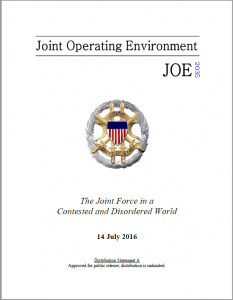 Globally Integrated Operations – that is, the ability to purposefully bring together the full panoply of joint capabilities in time and space to achieve military tasks under a broad range of strategic goals. The Joint Staff’s
Globally Integrated Operations – that is, the ability to purposefully bring together the full panoply of joint capabilities in time and space to achieve military tasks under a broad range of strategic goals. The Joint Staff’s 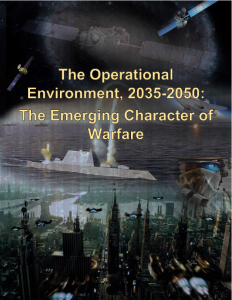 This theme was further explored in
This theme was further explored in 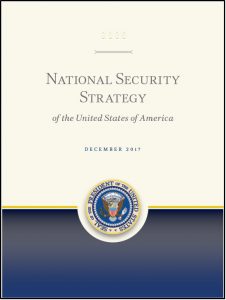 Helpfully, the new
Helpfully, the new  “… in calling Moriarty a criminal you are uttering libel in the eyes of the law, and there lies the glory and the wonder of it! The greatest schemer of all time, the organizer of every devilry, the controlling brain of the underworld — a brain which might have made or marred the destiny of nations. That’s the man!” Sir Arthur Conan Doyle’s Sherlock Holmes, describing his arch nemesis, Professor James Moriarty, in The Valley of Fear, published in 1914.
“… in calling Moriarty a criminal you are uttering libel in the eyes of the law, and there lies the glory and the wonder of it! The greatest schemer of all time, the organizer of every devilry, the controlling brain of the underworld — a brain which might have made or marred the destiny of nations. That’s the man!” Sir Arthur Conan Doyle’s Sherlock Holmes, describing his arch nemesis, Professor James Moriarty, in The Valley of Fear, published in 1914. 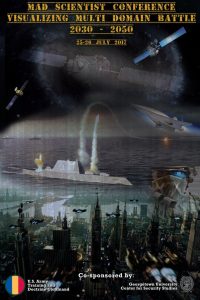 In Professor Moriarty, Conan Doyle created the prototypical Super-Empowered Individual (SEI). Today’s SEIs — far from being fictional characters crafted to entertain readers from a gentler era — are real world, non-state actors that have been empowered by the on-going digital revolution, and are able to target and adversely affect the lives of millions around the globe. Mad Scientists addressed the threat posed by SEIs at the
In Professor Moriarty, Conan Doyle created the prototypical Super-Empowered Individual (SEI). Today’s SEIs — far from being fictional characters crafted to entertain readers from a gentler era — are real world, non-state actors that have been empowered by the on-going digital revolution, and are able to target and adversely affect the lives of millions around the globe. Mad Scientists addressed the threat posed by SEIs at the 

 Wired recently reported on several Distributed Denial of Service (DDoS) attacks, launched by SEIs. This
Wired recently reported on several Distributed Denial of Service (DDoS) attacks, launched by SEIs. This 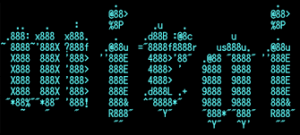
 These attacks, however, need not necessarily be broad DDoS operations; SEIs can leverage these disruptive technologies to craft and execute
These attacks, however, need not necessarily be broad DDoS operations; SEIs can leverage these disruptive technologies to craft and execute 

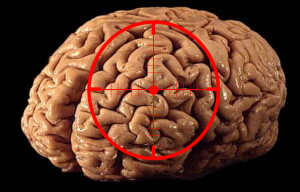 Direct attacks upon, and the manipulation of, Soldiers’ and noncombatants’ brains represent a significant threat, challenge, and opportunity in neurotechnology. The human brain will be a specific target of Multi Domain Battle.
Direct attacks upon, and the manipulation of, Soldiers’ and noncombatants’ brains represent a significant threat, challenge, and opportunity in neurotechnology. The human brain will be a specific target of Multi Domain Battle. explained how neuroscience has made huge leaps by using technology to study and understand how the nervous system is structured and functions. NeuroS/T puts the brain at our fingertips, enabling us to better understand it.
explained how neuroscience has made huge leaps by using technology to study and understand how the nervous system is structured and functions. NeuroS/T puts the brain at our fingertips, enabling us to better understand it. • Advanced neuro-psychopharmacologics
• Advanced neuro-psychopharmacologics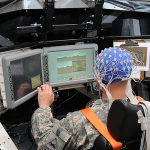 • Computational brain-machine interfaces
• Computational brain-machine interfaces • Closed-loop brain stimulation approaches
• Closed-loop brain stimulation approaches • Neuro-sensory augmentation devices
• Neuro-sensory augmentation devices







 Karel Čapek, an early Twentieth Century Czech playwright, coined the expression “Robot” in his 1921 play entitled, “R.U.R” (i.e., “Rossum’s Universal Robots”). According to Professor Howard Markel, University of Michigan:
Karel Čapek, an early Twentieth Century Czech playwright, coined the expression “Robot” in his 1921 play entitled, “R.U.R” (i.e., “Rossum’s Universal Robots”). According to Professor Howard Markel, University of Michigan: 
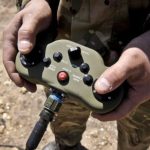 • Remote Control. A mode of operation wherein the human operator, without benefit of video or other sensory feedback, directly controls the actuators of an Un-Manned System (UMS) on a continuous basis,
• Remote Control. A mode of operation wherein the human operator, without benefit of video or other sensory feedback, directly controls the actuators of an Un-Manned System (UMS) on a continuous basis,  from off the vehicle and via a tethered or radio linked control device using visual line of sight cues. In this mode, the UMS takes no initiative and relies on continuous or nearly continuous input from the user.
from off the vehicle and via a tethered or radio linked control device using visual line of sight cues. In this mode, the UMS takes no initiative and relies on continuous or nearly continuous input from the user. 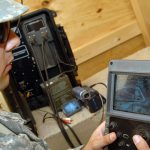 • Augmented Teleoperation. A mode of operation wherein the human operator leverages video or
• Augmented Teleoperation. A mode of operation wherein the human operator leverages video or 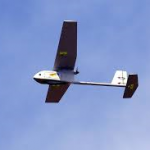 other sensory feedback to directly control the actuators of a UMS on a continuous basis.
other sensory feedback to directly control the actuators of a UMS on a continuous basis. • Semi-Autonomy. The condition or quality of being partially self-governing to achieve an assigned mission based on the system’s pre-planned situational awareness (integrated sensing, perceiving, analyzing) planning and decision-making. This independence is a point on a spectrum that can be tailored to the specific mission, level of acceptable risk, and degree of human-machine teaming.
• Semi-Autonomy. The condition or quality of being partially self-governing to achieve an assigned mission based on the system’s pre-planned situational awareness (integrated sensing, perceiving, analyzing) planning and decision-making. This independence is a point on a spectrum that can be tailored to the specific mission, level of acceptable risk, and degree of human-machine teaming.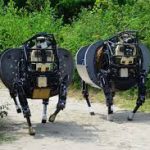 Full independence that humans grant a system to execute a given task in a given environment.
Full independence that humans grant a system to execute a given task in a given environment.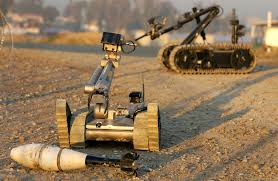

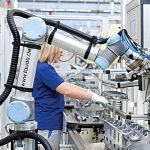 Although a typical current production line today features only 1 product per line, changeover cycles of 2 weeks, and a part cycle time of 6 seconds; future robotics-enabled production will be a flexible configuration of 10+ products per line, nearly zero time required for changeover, 6 second cycle times and sub-millimeter precision.
Although a typical current production line today features only 1 product per line, changeover cycles of 2 weeks, and a part cycle time of 6 seconds; future robotics-enabled production will be a flexible configuration of 10+ products per line, nearly zero time required for changeover, 6 second cycle times and sub-millimeter precision. It is not likely that they will evolve to be ever more human in appearance, because humanoid shapes are sub-optimal for many jobs or tasks. Robotic forms can be tailored to the task rather than the other way around. Future robotics will be less immediately recognizable as “robots” and our human terrain will morph to accommodate optimal robotic physical configurations.
It is not likely that they will evolve to be ever more human in appearance, because humanoid shapes are sub-optimal for many jobs or tasks. Robotic forms can be tailored to the task rather than the other way around. Future robotics will be less immediately recognizable as “robots” and our human terrain will morph to accommodate optimal robotic physical configurations.
 Current robotic controls must extend from singular entities to control of multi-robot systems: formations vice individual interaction. How do we address individual control of truly large robotic teams?
Current robotic controls must extend from singular entities to control of multi-robot systems: formations vice individual interaction. How do we address individual control of truly large robotic teams? • Additive Metallic Manufacturing. To date the application of robotic 3D additive manufacturing has focused on the use of resins and polymers to inexpensively generate shapes and applications amenable to those materials. 3D printing of metal parts requires relatively large and expensive machines, very high-powered lasers and expensive technicians, although there are efforts underway to extend the desktop 3D printing approach to metal manufacturing. Solving the 3D metallic manufacturing problem would truly revolutionize manufacturing.
• Additive Metallic Manufacturing. To date the application of robotic 3D additive manufacturing has focused on the use of resins and polymers to inexpensively generate shapes and applications amenable to those materials. 3D printing of metal parts requires relatively large and expensive machines, very high-powered lasers and expensive technicians, although there are efforts underway to extend the desktop 3D printing approach to metal manufacturing. Solving the 3D metallic manufacturing problem would truly revolutionize manufacturing. 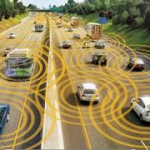 Humans will expect high reliability performance from robotic systems: ‘death by robotic accident’ will be unacceptable, even for instances where more frequent death by human accident is already tolerated for non-robotic systems.
Humans will expect high reliability performance from robotic systems: ‘death by robotic accident’ will be unacceptable, even for instances where more frequent death by human accident is already tolerated for non-robotic systems. Robotics generate risk reduction and performance enhancements, but trade the best cognitive computer available: the human brain. This trade can be mitigated by “Centaur Warfighting”: human-machine teaming that is not only possible but in many cases preferable. Hybrid human-machine cognitive architectures may be able to leverage the precision and reliability of automation without sacrificing the robustness and flexibility of human intelligence.
Robotics generate risk reduction and performance enhancements, but trade the best cognitive computer available: the human brain. This trade can be mitigated by “Centaur Warfighting”: human-machine teaming that is not only possible but in many cases preferable. Hybrid human-machine cognitive architectures may be able to leverage the precision and reliability of automation without sacrificing the robustness and flexibility of human intelligence. • Destructive Disruption. One should also note the potential disruptive impact of the robotics revolution, not only with respect to warfare but across the entire global economy, particularly through the displacement of a substantial portion of the labor force. The debate on the extent of that disruption – and whether this disruption is beneficial or detrimental – remains undecided. Some have argued that technology has always created more jobs than it has destroyed. They claim “Robots Will Save the Economy” and cite robotics as necessary for further improvements in productivity across a wide range of labor-intensive tasks.
• Destructive Disruption. One should also note the potential disruptive impact of the robotics revolution, not only with respect to warfare but across the entire global economy, particularly through the displacement of a substantial portion of the labor force. The debate on the extent of that disruption – and whether this disruption is beneficial or detrimental – remains undecided. Some have argued that technology has always created more jobs than it has destroyed. They claim “Robots Will Save the Economy” and cite robotics as necessary for further improvements in productivity across a wide range of labor-intensive tasks. 